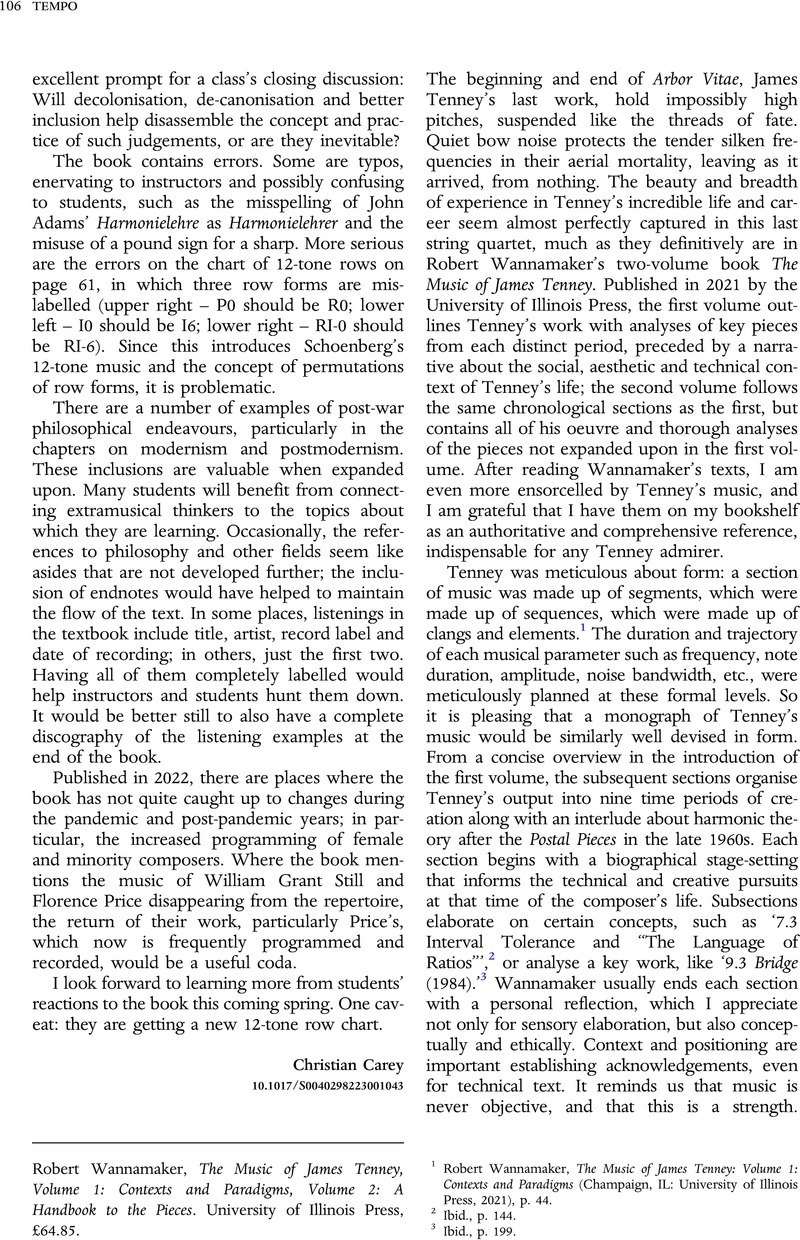No CrossRef data available.
Published online by Cambridge University Press: 01 April 2024

1 Wannamaker, Robert, The Music of James Tenney: Volume 1: Contexts and Paradigms (Champaign, IL: University of Illinois Press, 2021), p. 44Google Scholar.
2 Ibid., p. 144.
3 Ibid., p. 199.
4 Ibid., p. 11.
5 Ibid., p. 101.
6 Robert Wannamaker, Toronto Audio Engineering Website, www.torontoaes.org/robert-wannamaker/ (accessed 11 December 2023).
7 Wannamaker, The Music of James Tenney: Volume 1, p. 144.
8 Ibid., p. 269.
9 Ibid., p. 72.
10 Ibid., p. 133.
11 Wannamaker, Robert, The Music of James Tenney: Volume 2: A Handbook to the Pieces (Champaign, IL: University of Illinois Press, 2021), p. 58Google Scholar.
12 Wannamaker, The Music of James Tenney: Volume 1, p. xiii.